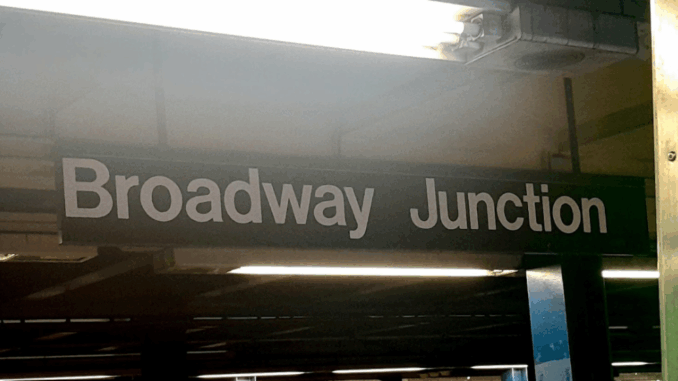
BY KIRSTEN DAVIS
East New York’s Broadway Junction is undergoing a major upgrade. On Tuesday, September 9, the NYC Council Subcommittee on Zoning and Franchises held a hearing on the progress of the upgrade, which quickly became heated.
The intent was to discuss and petition for the “demapping” of Sackman Street, to remove it from New York City maps, but the discussion soon veered off into Broadway Junction’s sanitation problem during the construction.
The New York City Economic Development Corporation announced plans to give the area a makeover which will put underutilized space to use, redesign the Broadway Junction train station entrance and the improvement of City streets around the station. $400 million is being put into the project by the MTA to improve station accessibility, first greenlit in May 2023 by Mayor Eric Adams, with an additional $95 million being added by the city to improve the surrounding streets. While the project should be viewed as good for the area, there are lasting issues that have not been addressed or taken care of. As work goes underway, Broadway Junction is suffering rather than benefiting from the work being done.
The surrounding area is overrun with trash and neglected while the MTA works on repairs at the nearby train station. MTA vehicles block accessibility to both residents and the NYC Department of Sanitation. As a result, the MTA is inadvertently doing more harm than good. MTA workers who are part of the project are not putting in any effort to keep the streets and sidewalks clean despite their contributions to litter. The nearby bus hub, MTA vehicles, and workers themselves block streets and prevent DSNY street cleaners from being able to access the space to clean it.
Councilwoman Sandy Nurse brought up the issue at the subcommittee. “This is a $400 million public works project which will dramatically revamp Broadway Junction Station and we’re all excited for it, but we need to do better here,” Councilwoman Nurse said. “This project is supposed to bring public dollars to local business and workers to strengthen our local economy but there are many issues.”
Nurse is passionate about the waste problem plaguing New York City, and since 2011, looked for a way to uplift communities that were burdened by waste. In 2014, she founded BK ROT, a bike-run compost collection program run by youths of color. The garbage problem left unresolved at Broadway Junction angered her enough to demand change at the subcommittee, but no change has come. “I want to hear today from MTA how you plan to take care of this area and prove to the community that you’re competent and capable of doing that because thus far, we’re not seeing it,” she said. “I’m really tired of asking and I don’t like asking in this kind of forum.” While the DSNY has made attempts to clean the area, Nurse also stated that MTA workers would then bully DSNY workers who issued tickets because they were blocked from doing their jobs.
One area, presented in photographs by Nurse shown covered in mountains of trash bags, was the now repurposed Sackman Street and has since been developed into part of Callahan-Kelly Park. According to Elizabeth Ernish of the NYC Department of Parks & Recreation, “Currently, we are maintaining it. Maintenance is always a challenge to the parks department but in this case we were able to absorb it into our regular maintenance operations for Callahan-Kelly park.”
“It doesn’t look like it’s being maintained very well,” said Chair of the subcommittee, Kevin C. Riley. “From my experience within my community, I know when you’re taking care of a large park or a large area, you want to make sure that you’re able to maintain it. It doesn’t make any sense that we have these beautiful parks and they’re just covered with garbage all the time.”
When asked to provide a plan to solve the issues with the garbage littering Broadway Junction, Arturo Espinoza of the MTA could only tell Nurse, “I will get to you as soon as possible.” While the MTA has plans to finish the project within three years, they had no intention of providing any explanation on how they would be maintaining the space both during and after the project is complete.
